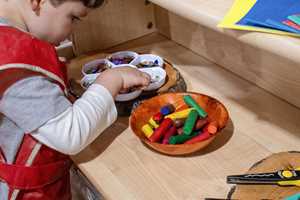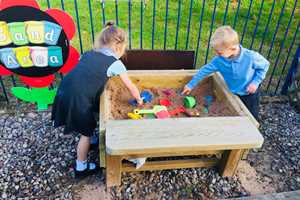
Special Educational Needs
Climbing Equipment Brings Many Benefits To Children with SEN
Climbing is a physically demanding activity that requires logical and sequential thought, concentration and motor planning, as well as physical strength. And it’s a fantastic outdoor activity for children with Special Educational Needs, offering them multiple benefits.
Outdoor climbing programs for SEN adults and children take place at beautiful and breath-taking locations around the country, and for good reason!
It’s exciting, exhilarating, and delivers a sense of achievement that we believe should be made available to all children!
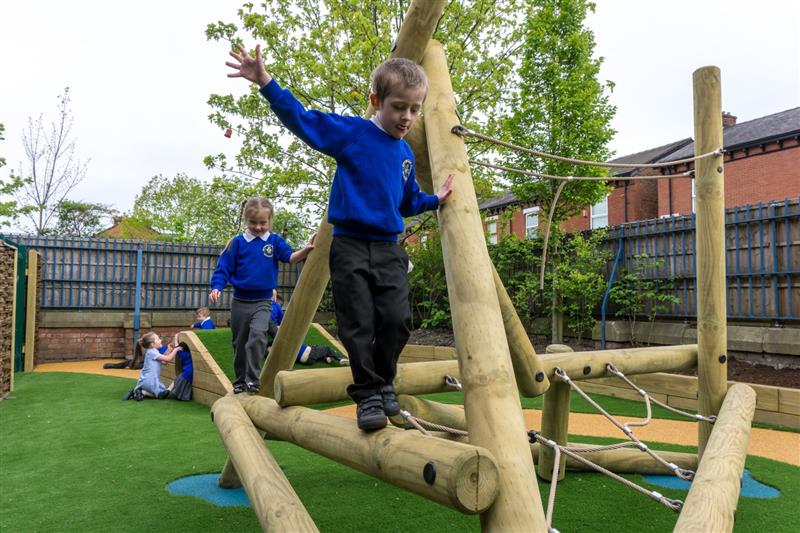
In this article, we explore the many benefits of Climbing for children with Special Educational Needs and look at how any school can offer climbing as a regular physical and educational activity in their own outdoor playground.
Climbing activities in the school playground incorporate the physical experience of climbing, all that reaching, pulling, stretching and grasping, building balance, strength and coordination, with many other skills. Due to this, we are strong believers that climbing frames are worth adding to any playground.
Product Spotlight
Opportunities to learn how to follow instructions, work with others and build social skills and relationships, improve listening skills, and subsequently improve self-esteem, are all formed through climbing.

Some of the many benefits of climbing for all children, and especially those with Special Educational Needs, are as follows:
Physical Benefits of Climbing
- Increased strength in arms, legs and hands, leading on to improvement in fine motor skills.
- Improved hand-eye and foot-eye coordination.
- Development of core strength and muscle tone.
- The range of movement required for climbing can increase flexibility and muscle extension, which can help to prevent or reduce muscular atrophy.
- Cardiovascular exercise and general health and fitness. Children with physical disabilities often participate in more sedentary activities than active ones. Climbing at whatever level they can means they are moving their bodies, they are getting exercise, and improving digestion and circulation too.
Mental Benefits of Climbing
- Decision making runs through the heart of climbing, as children are faced with choosing a particular path, assessing risk and contemplating how they are going to get across the wall safely. Making the best decisions will see them complete their climb. Regular decision making in this context helps children to believe in themselves and have confidence in their own decisions.
- Linked to decision making is problem-solving. Children have to determine where to place their weight, hands and feet through the climb and solve the problem of getting from A to B.
- Actions and directions such as up/down, higher/lower, right/left, sideways and go/stop are all needed for climbing. Experiencing these words and concepts through kinaesthetic learning as well as verbally helps children to learn and understand them.
- A child’s ability to pay attention and concentrate is greatly improved through climbing. Focusing on the climbing wall and constantly searching for the next hold to reach for can help block out other distractions and increase attention. Children are then better able to focus and attend to mental tasks after they have had the chance to use their whole body in action.
- Memory and recall is improved as children follow different routes and remember which climbing techniques work best for them and which routes they can follow to successfully climb from one end to another.
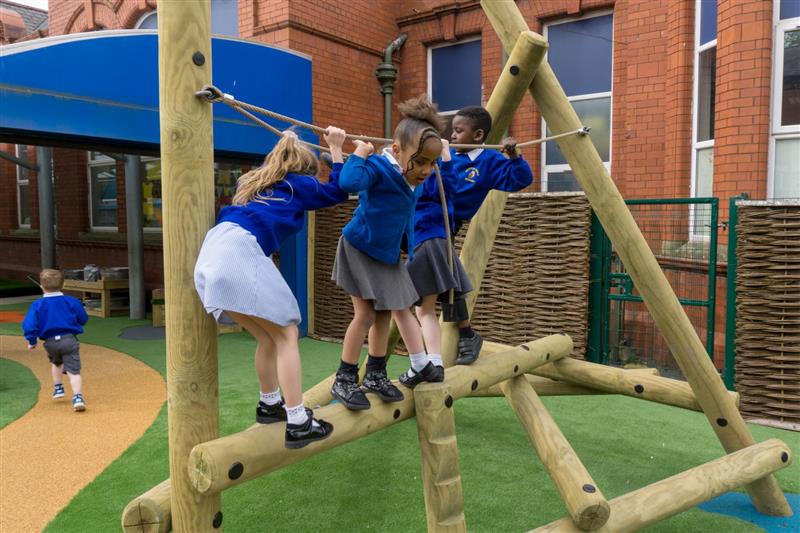
Sensory Benefits of Climbing
- A climbing wall in itself, with bold bright splashes of colour across the holds, looks really exciting, intriguing and inviting for young children! Nothing better to motivate them and get them keen to have a go and get moving their bodies.
- Climbing is a very tactile activity that develops the vestibular system. Great for providing vestibular stimulation for burning off extra energy! As children climb, they gain exposure to movement and to sensory input which can really help with motor processing.
- Climbing also gives children’s bodies proprioceptive input (awareness of their own body’s position and movement). The pressure they feel in their muscles and joints can really help with their internal regulation.
Communication Benefits of Climbing
- Climbing allows for independent movement just as much as it is a team activity. Some children with autism spectrum conditions may not like physical contact, but climbing is an activity that takes account of that and allows them to move independently, unlike many team sports which involve regular physical contact.
- Receptive language, a child’s ability to understand words and language, can be developed through climbing as they talk with teachers and each other. They need to communicate where they are on the wall in relation to each other and what steps they need to take next. This is a particularly important skill for children with visual impairments. Climbing requires children to listen to and process instructions from supporting teachers, for example, which colour hold to move to next.
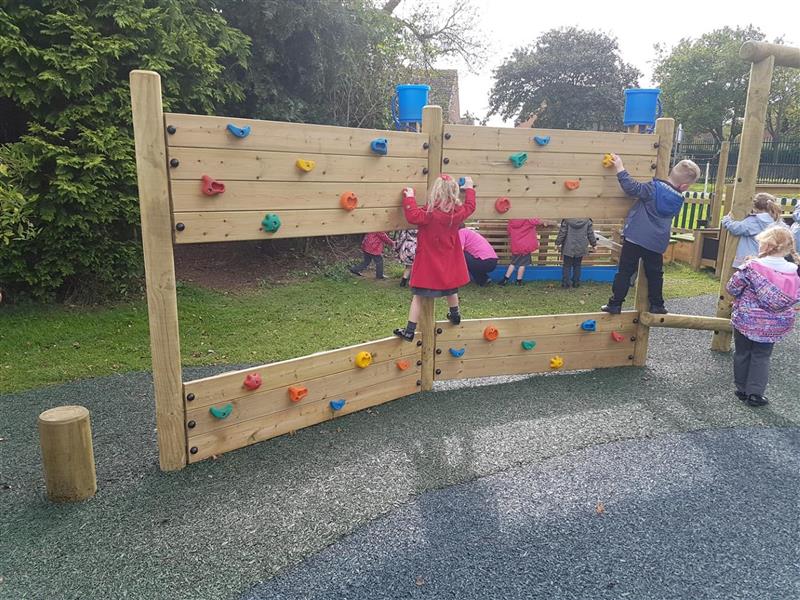
Climbing Walls and Wooden Climbing Frames for Schools
Many therapy centres and hospitals use climbing equipment to help children with special needs through occupational and physical therapy, improving their physical and sensory development.
Climbing Walls and Climbing Frames in schools are ideal for PE lessons, and for adapted and inclusive physical education across the board.
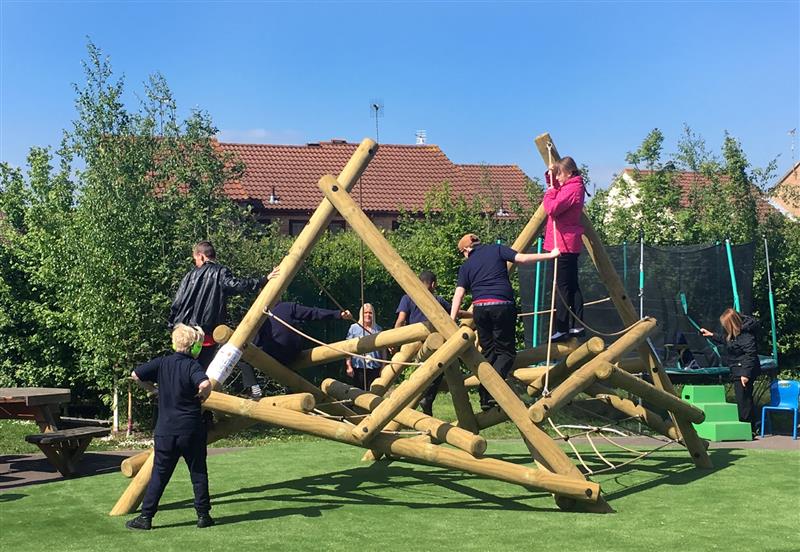
They are an ideal resource for schools looking for cost-effective ways of spending the PE and Sports Premium, providing longevity, broadening sporting opportunity available to pupils and increasing overall pupil participation in sport.
Well received in SEN classes, they provide fantastic fun ways of integrating learning and movement, where problem-solving, visual attention and concentration is a key focus for learning.
At Pentagon, we design, supply and install a wide range of outdoor climbing equipment suitable for primary schools and nurseries, which support children with Special Educational Needs.
We even offer a range of Climbing Frames with Slides!
For example, our Bouldering Climbing Wall is really popular with children of mixed abilities, offering a range of routes mixing easier climbs, with lots of holds along the way and angled panels to support the climber, to more difficult options with overhangs.
With a critical fall height of 1.9m from the very highest point, and a focus on scaling across between left and right as much as up and down, it is very easy for teachers and support workers to assist children as they climb whenever or however they may need support.
Our Timber Climbing Walls and themed Traverse Panels are equally popular, whether as standalone pieces of climbing equipment or incorporated into our range of multi-skill Trim Trails and Climbing Frames.
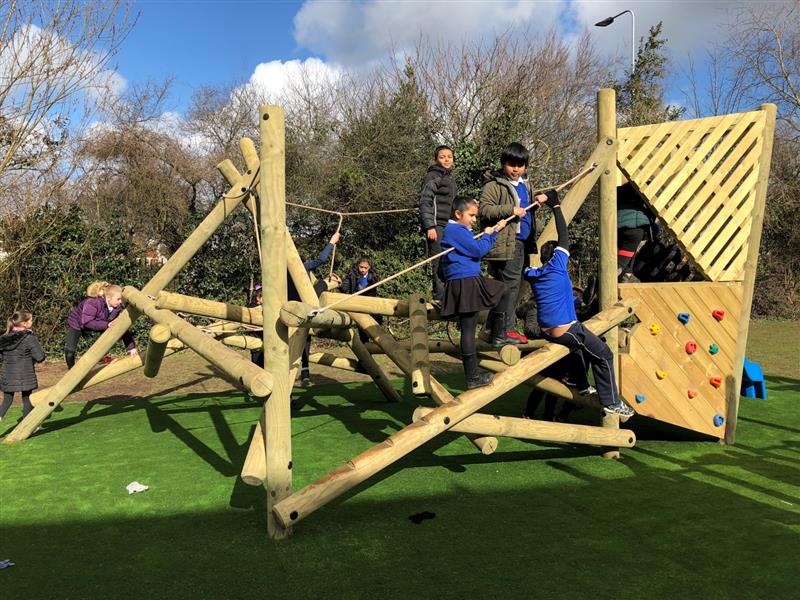
If you're interested in creating a playground that promotes climbing for children with special needs, complete our Contact Form and we will be in touch to arrange a free consultation. You can also view our amazing range of Active Playground Equipment for climbing here.




.jpg)
.jpg)
.jpg)

